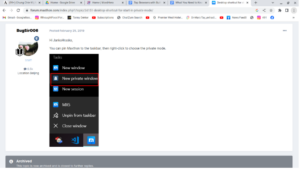 Many popular web browsers advertise their private or incognito modes that promise to erase your search history. However, upon closer inspection, these modes only prevent other users of the same device from seeing your browsing activity, not your internet service provider (ISP).
Many popular web browsers advertise their private or incognito modes that promise to erase your search history. However, upon closer inspection, these modes only prevent other users of the same device from seeing your browsing activity, not your internet service provider (ISP).

This raises the question: Is there such a thing as a genuinely private browser? To find out, the team delved into third-party private browsers such as Tor and DuckDuckGo. These browsers prioritise user privacy and security by routing internet traffic through various servers and encryption methods to conceal online activities from ISPs and potential snoopers.
Tor, short for The Onion Router, operates using a network of volunteer-run servers to protect users’ privacy and ensure anonymity. It enables access to the internet via a series of encrypted connections that conceal the user’s location and usage from anyone conducting network surveillance or traffic analysis.
DuckDuckGo is another browser that champions user privacy. It doesn’t track its users or collect personal information and also offers built-in features like tracker blocking and private search options. By using this type of alternative browser, individuals can enhance their online privacy while minimising data collection by advertisers and other third parties.
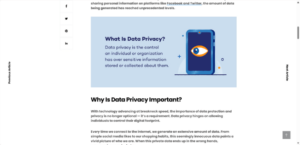
Despite these efforts by third-party browsers, it’s important to note that no browser can guarantee complete anonymity on the internet due to complex factors involved in internet usage. Users interested in fortifying their online privacy should conduct thorough research on available options before choosing a suitable browser for their needs.
Private browsing online
A private browser refers to a web browser that enhances user privacy and security by either encrypting internet activity to prevent ISP tracking or utilising incognito mode to clear browsing history on the same device. This term can encompass different levels of privacy protection, so it’s crucial to understand whether it hides activities from the Internet Service Provider (ISP) or other users on the specific device being used.

Encryption-enabled private browsers add an extra layer of security by concealing online behaviour from ISPs, thereby preventing them from monitoring and tracking internet usage.
Incognito mode ensures that no traces of browsing history are left on the device for other users to find. Therefore, depending on individual needs and concerns, users should be clear about what type of privacy they are seeking from a private browser to ensure that their expectations align with its capabilities.
Overall, understanding the distinction between these two types of private browsing is essential for making informed decisions about maintaining online privacy and protecting sensitive information. By being aware of these differences, individuals can select the appropriate level of protection that aligns with their specific privacy needs and requirements.
Various factors motivate the use of private browsing mode. For instance, individuals may opt for this feature when using public or shared devices to conceal their search history from subsequent users. Even on privately owned devices, users may wish to maintain privacy, such as not wanting family members to know their online activity.

Private browsing can also be advantageous when booking travel, as it prevents potential price fluctuations based on previous searches. It offers enhanced security by concealing the user’s IP address, reducing vulnerability to hacking and identity theft—especially when connected to public Wi-Fi networks.
Furthermore, private browsing allows for convenient management of multiple email accounts without the need for constant sign-in and sign-out. Lastly, individuals conducting sensitive research or engaging in activities like journalism or activism may find private browsing invaluable for safeguarding their privacy and security.
Below is a compilation of private browsers, encompassing third-party private browsers as well as the default browser of your operating System equipped with incognito mode, also referred to as private browsing mode.
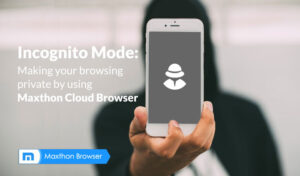
These include Avast Secure Browser, Brave Privacy Browser, Bromite, DuckDuckGo, Ecosia, Epic Privacy Browser, I2P, Tor, and Vivaldi.
The major browsers offer a private mode feature, including Apple Safari, Firefox, Google Chrome (which can be further enhanced with a Chrome VPN for maximum privacy), Microsoft Edge, and Opera.
Activate private browsing
To activate private browsing, users can simply open a truly private browser like Tor, which is automatically enabled and cannot be turned on or off.
However, those using incognito mode on a regular browser can turn it on by following these steps: in Chrome (desktop), open the browser, click More, and then select New Incognito Window; in Chrome (Android/iOS), open the app, click the three dots in the upper right corner, and select New Incognito tab.

Firefox can be accessed in private mode by opening the browser, clicking on the Menu, and selecting New Private Window.
Microsoft Edge offers private browsing by clicking on Settings And More and then selecting New InPrivate Window. Opera provides access to private mode by clicking on File and then selecting New Private Window. Finally, Safari allows users to enter private mode by clicking on File and then selecting New Private Window.
Maxthon and privacy
For private surfing, the Maxthon browser can be accessed by following a few simple steps. To begin, the user can open the Maxthon browser and navigate to the settings menu. From there, they should look for the option that allows them to switch to private browsing mode.
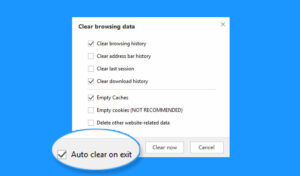
Once located, they can click on this option to activate private mode. When this is done, the browser will enter a state where it does not store its browsing history or cookies.
While in private mode, temporary internet files and form data are not saved. This provides users with a more secure and private browsing experience.
In private mode, the Maxthon browser prioritises user privacy by not storing browsing history or cookies. However, it’s worth noting that the browser may retain specific data, including bookmarks and downloads, in a separate section.

This means that while private mode provides an added layer of privacy, users should still be mindful of any potentially retained information. By separating this data from regular browsing activity, Maxthon aims to strike a balance between privacy and ease of use for its users.

This approach acknowledges the need for convenience while respecting the desire for enhanced privacy during online sessions. Therefore, individuals using private mode should remain cautious about the potential retention of some browsing-related data within the browser’s separate section.
It’s important to note that while in private mode, the Maxthon browser may still retain some information, such as bookmarks and downloads, in a separate section of the browser.
Users should also be aware that although their local browsing history will not be stored, their internet service provider or employer may still have access to their online activities.
Private browsing refers to a feature available on many web browsers, such as Google Chrome and Mozilla Firefox. When someone opens a new incognito window, the browser does not save browsing history, cookies, or site data. However, it is crucial to understand that private browsing is not wholly untraceable.
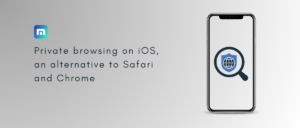
For example, if someone uses the Tor browser, their online activity and IP address are encrypted multiple times for increased privacy. This makes it difficult for others to track their online movements.
Activating the incognito mode in regular web browsers may not offer the same level of privacy. Internet service providers (ISPs) can still monitor users’ online activities even when they are in incognito mode.

Individuals need to be aware of the limitations of private browsing modes and take further precautions if they require complete anonymity online.
Encrypted browsers:
Private browsers like Tor and DuckDuckGo provide a level of encryption for web activity. Still, this encryption only applies within the browser itself, leaving other apps vulnerable to surveillance by ISPs. This means that activities such as using email, navigating with Google Maps, or attending video calls via Zoom can still be accessed by your Internet Service Provider (ISP).
In contrast, Virtual Private Networks (VPNs) offer comprehensive protection by concealing browsing history across the entire device.
When using private browsers in incognito or private mode, users may feel a false sense of security regarding their online privacy. It’s important to understand that these modes provide limited protection and are not a foolproof solution for safeguarding sensitive information from ISPs or other surveilling entities.
VPNs, on the other hand, establish a secure, encrypted connection between the user’s device and the internet, shielding all online activities from prying eyes.
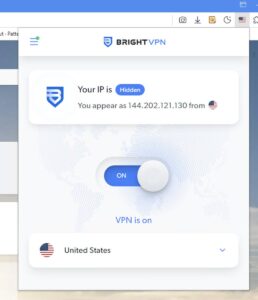
While private browsers encrypt web activity within the browser, they do not extend this protection to other applications on the device.
Utilising a VPN ensures that all online interactions are shielded from potential observation by ISPs, offering a more comprehensive approach to privacy protection.
Tracking prevention
Tracking apps have a darker side than meets the eye. Tech companies gather copious amounts of data as users navigate from one website to another, primarily if private browsing or VPNs need to be utilised. The truth is that without these measures, everyone is easily traceable online due to cookies. These tiny pieces of code stored in a web browser can track user behaviour, preferences, and interactions with websites.
When using a web browser or a Virtual Private Network (VPN), internet activity becomes more secure and less susceptible to tracking. By activating private mode, the browser prevents the storage of cookies and clears all browsing history upon exit.

VPNs encrypt internet traffic, making it difficult for third parties to monitor online activities.
These tools are essential in protecting one’s privacy while browsing the internet—especially when visiting various sites for research or leisure. Individuals must become aware of these tracking methods and take precautions to control what information tech companies can collect about their online activities.
Tracking can be prevented using various methods, such as private browsing tools like Tor or a VPN. While proxy servers are also an option, they are less secure compared to VPNs. Setting up a VPN is considered the most effective way to ensure privacy and prevent tracking.
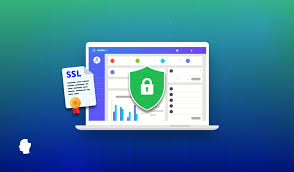
By using a VPN, users can hide their online activities and IP addresses across all their internet-connected devices. A helpful tip for additional security is to install a VPN directly on the router, providing comprehensive protection with a single connection.
Choosing the proper method for preventing tracking depends on individual preferences and needs for privacy.
Whether it’s private browsing, a VPN, or other tools, taking proactive steps can effectively combat unwanted tracking.
Free browsing
In order to surf the web freely, there are various methods aside from using private browsers or VPNs. One approach is to opt out of cookies, even when using a VPN and private browsing. It’s important to avoid sharing factual information on forms unless it’s necessary for medical or government purposes.
Simple Opt Out allows users to opt out of data sharing with over 50 major companies. Turning off ad trackers and location services on devices can also help limit online tracking. Lastly, it’s advisable to limit app permissions by saying no whenever possible and only allowing access when necessary.
When seeking private web browsing, using incognito mode is insufficient. Instead, it is advisable to utilise a VPN or, if not using web apps, a secure browser such as Tor. The level of encryption, such as with a double VPN, directly correlates to online security and privacy.

